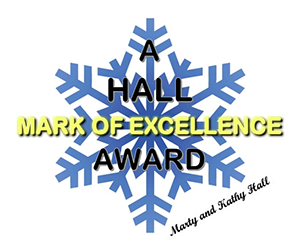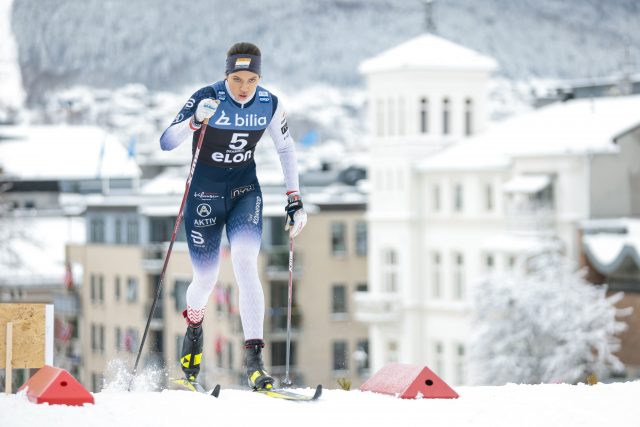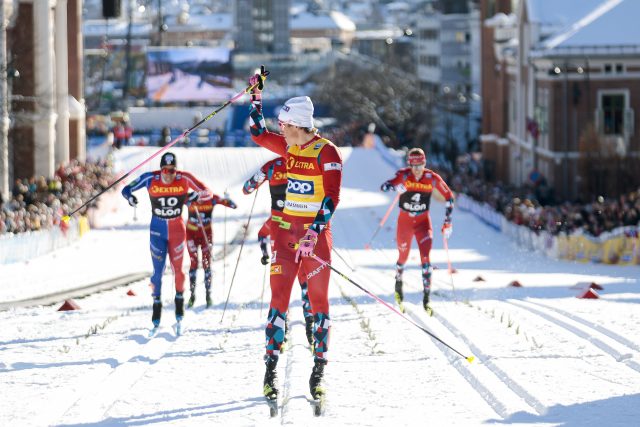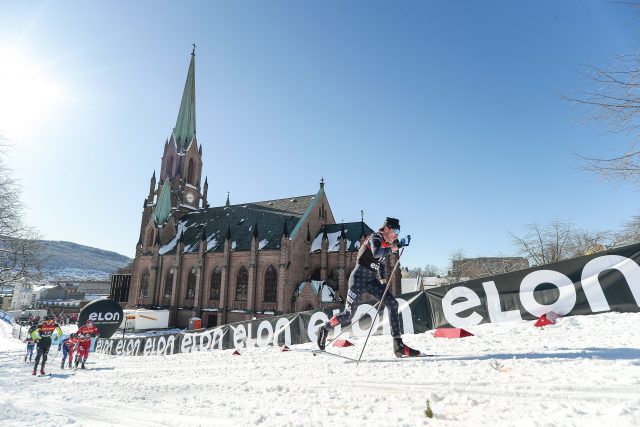 This World Cup coverage is made possible through the generous support of Marty and Kathy Hall and A Hall Mark of Excellence Award. To learn more about A Hall Mark of Excellence Award, or to learn how you can support FasterSkier’s coverage, please contact info@fasterskier.com.
This World Cup coverage is made possible through the generous support of Marty and Kathy Hall and A Hall Mark of Excellence Award. To learn more about A Hall Mark of Excellence Award, or to learn how you can support FasterSkier’s coverage, please contact info@fasterskier.com.

The International Ski Federation (FIS) is not in the business of making things easy: this season’s World Cup scoring system rewards those skiers who ski every event, those who excel consistently. Gone are the days when a dominant skier could show up only on occasion, win the events that provide the biggest points, and collect the Crystal Globe at season’s end. Now, it’s an every-weekend journey, an every-race struggle, a constant battle with rivals and conditions and health and timing. The season is long . . . and it just keeps getting longer.
Just two days ago, the world’s best distance skiers convened at Holmenkollen for a 50 k Classic Mass start (historically, the first such distance race ever contested for the women’s field). Anyone hoping to contend for the year-long overall Crystal Globe not only needed to race that 50 k distance, but needed to race it well. There was no way around it: super-human efforts would be required.
Jessie Diggins (USA) and Tiril Udnes Weng (NOR) are currently running neck-and-neck in the race for the Overall Crystal Globe—their race separated by just 80 points after Holmenkollen where Diggins won five of six point bonus sprints, and finished third overall. Just two days later (!), both Diggins and Weng would toe the line for a further-exhausting day of sprinting at Drammen, Norway. Similarly, Norwegian stars Johannes Hoesflot Klaebo and Paal Golberg are locked in a race-by-race battle that appears likely to extend all the way to season’s end. Klaebo inched further ahead of Golberg at Holmenkollen, but crowds are anxious to see if the sprinter’s limbs will remain fresh enough to carry him through the remaining events of the season. There’s still a long, long way to race, and the FIS schedule ahead of them offers precious few days in which to recover: a full sprint schedule today in Drammen, Norway, followed closely by a three-day weekend in Falun, Sweden (sprint, distance race, and relay). Then another mid-week sprint looms in Talin, Estonia next Tuesday. Finally (and only a few days later), the season concludes in Lahti, Finland where final points will be tallied and Crystal Globes awarded. Very little rest, lots of racing, everything at stake. Anyone pursuing the Crystal Globe will be forced to chase like crazy, arms and legs aching, lungs protesting, tongues dragging, desperate to crawl first across Lahti’s finish line.
Predictably, the sharks have begun circling: with racers atop of the World Cup standings committing to exhausting themselves in every race, opportunities abound for fresher skiers—specialists in certain events—to knock the biggest names off the podium. Last weekend’s Holmenkollen field had included none of Sweden’s stars: neither sprinters nor distance specialists. As a result, Diggins and Weng would be challenged by a field of fresh sprinters in Drammen. The men’s Holmenkollen field had included none of the World Cup’s known sprint specialists: no Italian sprinters (Federico Pellegrino, Simone Mocellini), no French sprinters (Renaud Jay, Richard Jouve, Theo Schley, Jules Chappaz, Lucas Chanavat), no Finnish sprinters (Lauri Vuorinen, Niilo Moilanen), no Swedish sprinters (Calle Halfvarsson, Marcus Grate), no Norwegian sprinters (Even Northug, Erik Valnes, Sindre Bjoernestad Skar). None of them skied Holmenkollen. Even Ben Ogden (USA) chose to skip both the Holmenkollen 50 k AND his chance to defend his NCAA titles. Still seeking his first trip to a World Cup Sprint Final, Ogden would be fresh in Drammen, as well.
Women’s Sprints
Diggins quarterfinal was a fast-paced affair pushed by Ane Appelkvist Stenseth (NOR), Jonna Sundling (SWE), and Johanna Hagstroem (SWE). It was not surprising to see Diggins looking like a skier who had just recently finished a race-pace 50 k. She would finish well behind the leaders in 3:01.8 (in a heat that was won by Sundling in 2:54.8). Diggins’ day would end in the quarterfinals.
Rosie Brennan (USA) qualified 16th, later finding herself in a quarterfinal heat alongside Weng (who had a chance to pad her lead after Diggins quarterfinal elimination). Brennan would finish this quarterfinal in a competitive third place, but her finishing time (2:58.1) was not fast enough to earn advancement to the semifinal as a lucky loser. Like Diggins, Brennan’s day would end in the quarterfinals, while Weng would advance.

Having skipped Sunday’s Holmenkollen, Julia Kern (USA) may have felt relatively fresh when she approached the heats at Drammen. Having qualified 17th, Kern remained controlled and tactical in a quarterfinal led out by World Cup Sprint Leader, Dahlqvist. Kern navigated the turns brilliantly in a very crowded field, and opened up a high-tempo double pole to pass Dahlqvist and Lotta Udnes Weng (NOR) in the finishing straight. She won the heat, and advanced to the semifinal where she took advantage of fast skis (and a perfectly executed slingshot) to accelerate past the field on the final bump. She led around the final corner, and showed a very strong double pole down the finishing straightaway to take the semifinal win. Surprising eliminations in the semifinal included The Swedish contenders, Dahlqvist, and Hagstroem. Ultimately, Kern may have spent all her energy advancing through these heats. She never really contended in the final, finishing sixth.
The Drammen Sprint Final would provide answers to a number of questions: How much could T. Weng have left in the tank? Would someone interfere with Skistad’s long-running tactic, perhaps even preventing Skistad from ruining her own chances? Throughout Skistad’s career, she’s appeared notoriously stubborn and hard-headed about her tactics—go to the front, stomp the accelerator, punish the field . . . but get passed in the end. In her Drammen quarterfinal and semifinal, Skistad skied conservatively, allowing others to make the pace then passing them with strong double-poling at the end. Had she finally learned that this might not be the best tactic? In this Final, she proved that she had, following the pace of early-leader, Sundling, before sling-shotting past her at the base of the final downhill, and powering to the finish line for a thrilling win in front of her hometown crowd. It was sweet redemption for a skier who has struggled long and hard in order to prove her potential. Few would doubt her now . . .
T. Weng showed her class and capability with a third place finish, just behind second place Sundling. T. Weng leads the Overall World Cup chase by147 points over Diggins going into the weekend of racing in Falun.
Women’s Sprint Qualifying RESULTS
Women’s Sprint RESULTS

Men’s Sprints
The story of the men’s Sprint was all those well-rested sprinters lining up to take a shot at Klaebo. Good luck with that . . .
Klaebo is just too smart, too quick, too nimble, too fast, too powerful. Lots and lots of lucky stars must line up in order for someone to have a chance at out-sprinting Klaebo; evidently those stars didn’t align in the sky over Drammen. In World Cup Sprints, Klaebo has only been defeated by three men in the last two seasons: Alexander Bolshunov has been benched by the FIS (along with all his Russian teammates) . Federico Pellegrino raced in Drammen, but he failed to even qualify! Richard Jouve advanced to the Drammen final alongside Klaebo, but then changed the tactics that got him there. Unlike the quarterfinal and semifinals where Jouve lurked at the rear and made winning drives at the end, in the final Jouve opted to drive the pace from the front. That only served to allow to Klaebo to script a signature downhill slingshot that propelled him into the lead for a seemingly easy victory. Jouve would finish third behind second place Valnes.

Ogden orchestrated quite a day for himself as he continued to experiment with tactics that he hopes may soon land him in a World Cup Sprint Final. Ogden has speed, and audacity, and guts . . . and his tactics regularly alarm and flummox some of the world’s best sprinters. Ogden’s strategies this season have been both fascinating and brave; a number of times, he has committed an astonishing amount of energy in semifinals, calculating that advancing to a final may be accomplished as a lucky loser from a semifinal. Today, though, Ogden seemed willing to devote that degree of effort to the quarterfinal, as well, where he accelerated straight from the gun, launching to the front and establishing a comically huge gap. In the end, Jouve easily overtook Ogden in the final double pole straightway, while Ogden managed to hold off a stumbling Northug for second. While Ogden visibly ran out of gas in the finishing straight, he did manage to advance to the semifinal (a better result than his World Championship performance). Ultimately, a repeat performance of that hard-rushing tactic resulted in his being overtaken in the semifinal (where he finished sixth). In earlier interviews, Ogden suggested that he’ll keep trying, that he’ll keep putting himself in position to win so that—when the stars align—he’ll be ready.
Men’s Sprint Qualifying RESULTS
Men’s Sprint RESULTS
John Teaford
John Teaford—the Managing Editor of FasterSkier — has been the coach of Olympians, World Champions, and World Record Holders in six sports: Nordic skiing, speedskating, road cycling, track cycling, mountain biking, triathlon. In his long career as a writer/filmmaker, he spent many seasons as Director of Warren Miller’s annual feature film, and Producer of adventure documentary films for Discovery, ESPN, Disney, National Geographic, and NBC Sports.



